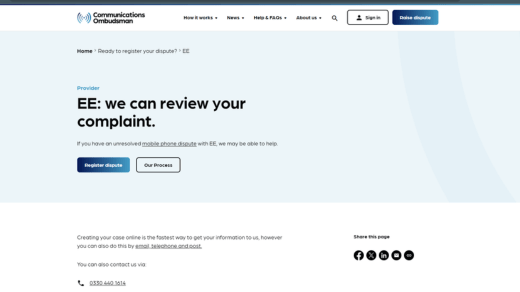Understanding EE’s Customer Complaints and Their Resolution Strategies

EE, one of the UK’s largest telecommunications providers, offers a wide range of services including mobile phone contracts, broadband, and home phone services. As with any large service provider, EE receives a variety of complaints from customers regarding different aspects of their service. Understanding the nature of these complaints and how EE addresses them is crucial to maintaining customer satisfaction and loyalty.
Common Types of EE Complaints:
- Billing Disputes: One of the most frequent complaints received by EE relates to billing issues. Customers may report incorrect charges, unexpected fees, or unclear billing statements. This can include charges for services not requested, discrepancies in usage charges, or confusion over promotional offers and discounts.
- Network Coverage and Service Issues: Complaints regarding network coverage and service quality are also prevalent. Customers may experience dropped calls, slow data speeds, poor signal reception in certain areas, or frequent network outages. These issues can significantly impact the usability of EE’s services, especially for customers who rely on their mobile phones for business or personal use.
- Customer Service Experience: Customers often voice complaints about their interactions with EE’s customer service representatives. This may include dissatisfaction with the responsiveness of customer support, long wait times to speak with a representative, or perceived lack of empathy and understanding when addressing issues.
- Technical Support Problems: Technical support-related complaints arise when customers encounter difficulties with their devices or services. This could include issues with device setup, software updates, connectivity problems, or hardware malfunctions. Customers expect prompt and effective assistance to resolve these technical issues.
- Contractual Disputes: Disputes over contractual terms and conditions, service agreements, or changes to service plans are also common. Customers may dispute early termination fees, changes in pricing or service offerings, or discrepancies between the terms agreed upon and the services received.
EE’s Approach to Handling Complaints:
EE has established procedures and channels to address and resolve customer complaints effectively:
- Accessible Complaint Channels: EE provides multiple channels for customers to submit complaints, including phone, online chat, email, and in-person visits to retail stores. This accessibility ensures that customers can choose the method that best suits their needs and preferences.
- Structured Complaint Resolution Process: EE follows a structured process for handling complaints, typically involving initial assessment, investigation of the issue, resolution attempts, and communication of outcomes to the customer. This systematic approach helps ensure consistency and fairness in complaint handling.
- Customer Support and Escalation Pathways: EE emphasizes the importance of customer support and escalation pathways for unresolved complaints. Customers have the option to escalate their concerns to senior representatives or dedicated complaints handling teams for further review and resolution.
- Transparency and Communication: EE strives to maintain transparency throughout the complaint handling process. They keep customers informed about the status of their complaints, expected timelines for resolution, and any actions taken to address the issues raised.
- Feedback and Continuous Improvement: EE uses feedback from complaints to identify trends, root causes of recurring issues, and opportunities for service improvement. This proactive approach helps EE enhance service delivery, address systemic issues, and prevent similar complaints in the future.
Customer Feedback and Satisfaction:
Monitoring customer feedback and satisfaction metrics is essential for EE to gauge the effectiveness of its complaint handling processes. Positive resolutions and improved customer experiences contribute to higher levels of customer satisfaction and retention.
Conclusion:
In conclusion, EE recognizes the importance of addressing customer complaints promptly and effectively to maintain trust and loyalty. By providing accessible complaint channels, following a structured resolution process, prioritizing transparency, and leveraging customer feedback for continuous improvement, EE strives to mitigate issues and enhance the overall customer experience in the competitive telecommunications market.
Check out Communications Ombudsman for more information.



